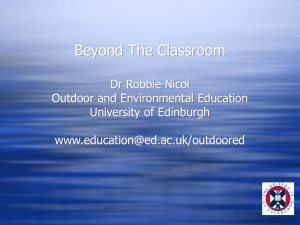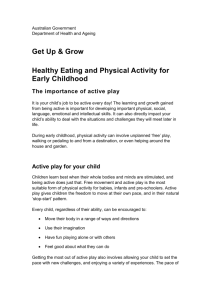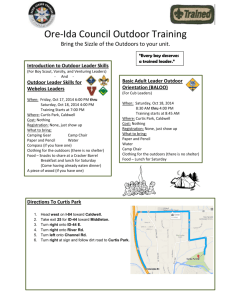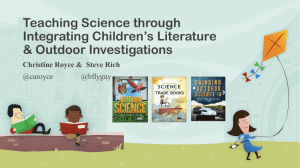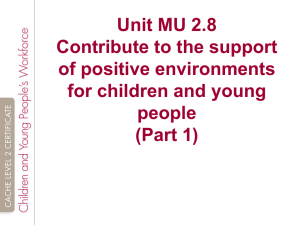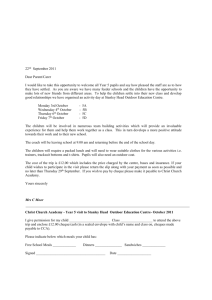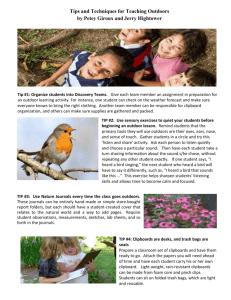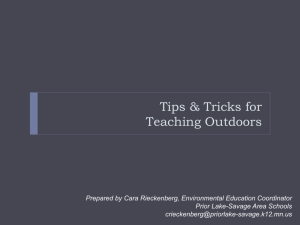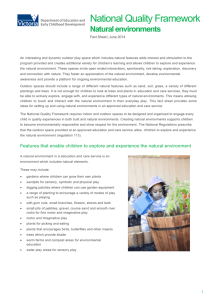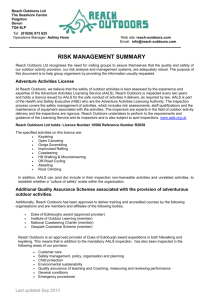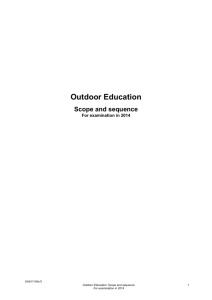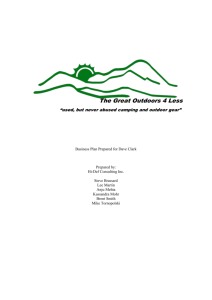scholarly journal critique
advertisement
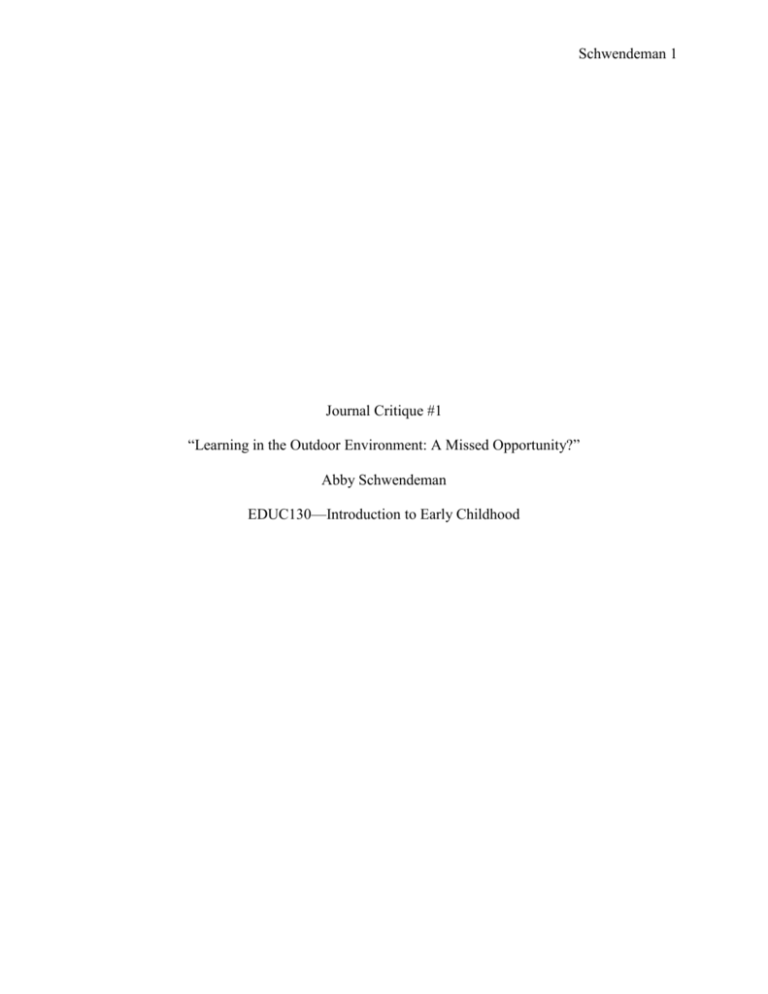
Schwendeman 1 Journal Critique #1 “Learning in the Outdoor Environment: A Missed Opportunity?” Abby Schwendeman EDUC130—Introduction to Early Childhood Schwendeman 2 The effects of outdoor learning on elementary-aged students are investigated in Trisha Maynard and Jane Waters’s article “Learning in the Outdoor Environment: A Missed Opportunity?” featured in Early Years, in October of 2007. Maynard and Waters argue that the outdoor environment helps encourage students’ imaginations, pique their curiosity, and can teach more developed problem solving skills. Unfortunately, many schools in Wales are not allowing adequate unstructured playtime outdoors for students, and classroom lessons are rarely incorporated outdoors. The Foundation Phase is a newly implemented program in Wales that will help encourage outdoor learning in students aged three to seven and will advocate for more play-based learning opportunities. This program is currently piloted in forty-two settings, and will be a country-wide program by the year 2010. After observing four school environments participating in the program, it was discovered that “there are limitations to the highly managed and essentially risk-free play often found in school yards… and that additional benefits may be derived by play in natural outdoor environments” (Maynard & Waters, 2007). Blacktop surfaces and playground equipment do not offer the same creative opportunities for students as natural environments do. One school participating in the study, while allowing students to have free-time outdoors, also planned trips to the local beach in cooperation with parent volunteers. This helped students to experience genuine natural environments and not just the synthetic, human-made parks and playgrounds. The authors of this article stress the importance of natural environments and unstructured play in the outdoor setting: The rich, sensory, natural environment not only supports children’s own investigations but also provides an ideal contest for group activities in which the development of knowledge, concepts, and skills from across the ‘curriculum’ are embedded within Schwendeman 3 authentic, purposeful and often real life tasks—examples include building dens, creating a pond area, clearing a path through undergrowth and growing food crops. Proponents of the Foundation Phase program hope that more similar programs will start sprouting up around the United Kingdom, as well as globally. I feel that programs such as the Foundation Phase program would be beneficial in the United States. Students’ time outdoors is being severely limited—both by school and by technology and television. It seems ludicrous that recess and playtime is being taken away from students and that they are expected to focus all day in closed-in classrooms. I feel that if students were allowed to go outside to natural environments, or if classes were taken outside for class activities/lessons, that students would be less-stressed and more “childlike.” When in nature, children are able to be themselves and are not forced to conform to harsh regulations that schools often impose in classrooms. After reading this article, I feel that it will be imperative for me to allow my elementaryaged students to explore the great outdoors. It not only is a great stress reliever and lets students run off their excess energy, but students also can learn valuable lessons from nature. I plan on not only allowing outdoor recesses (if the weather and school permits) but also incorporating lessons into my curriculum that allow students to get outside and get some fresh air. The outdoors can be a great teaching tool and I feel that more teachers need to utilize it in their curriculum. Schwendeman 4 References Maynard, T., & Waters, J. (2007, October). Learning in the outdoor environment: a missed opportunity?. Early Years: Journal of International Research & Development, 27(3), 255-265. Retrieved March 1, 2009, doi:10.1080/09575140701594400
